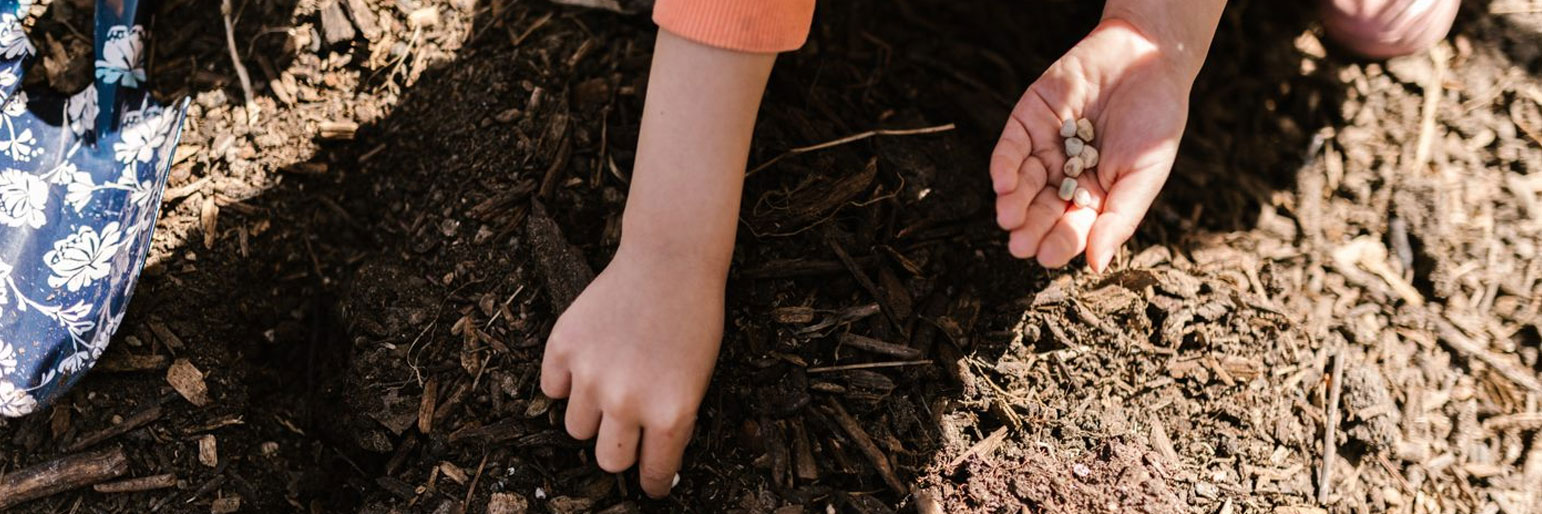Planting a seed
Learning together
Planting and growing seeds helps children understand the natural world, and encourages interest and curiosity about where plants, including fruit and vegetables, come from. This can foster excitement about eating a healthy diet.

Activity
Growing and planting helps children to learn that we can describe and compare objects by size, capacity and volume. Reading the seed packet helps children to understand that we can use symbols to describe words and concepts.
What you'll need
- Seedlings
- Pots
- Garden stakes
- Spade
- Gloves
- Potting mix
- Ice-cream container
- Spoon
- Egg carton
Words to use
- Deep/shallow, narrow, tall/wide
- Metre, centimetre
- Full sun, partial sun, full shade, partial shade
- Weeks, days, daily, weekly, monthly
- Fruit, vegetable, herbs
Questions to discuss
- How long will the plant take to grow?
- Where’s the sunniest part of the garden?
- Is there a part of the garden that has both sun and shade?
- How many seeds do we have to plant?
- How many containers do we need for the seeds?
Learning through play
Ways to develop numeracy through play
- Read the instructions and point out the different symbols that are used to give direction to know where to plant the seed, how deep to plant it and how big it will grow.
- Talk about what size container you’ll need for the seed to grow in.
- Create a calendar for watering and predict when the plant will appear above the ground.
- Talk about the volume of water the plant/seed will need and what size watering can will hold that much.
- Measure plants as they grow – make a chart/graph.
- Compare children’s height to tall plants such as sunflowers or corn.
- Sort seeds into groups.
Ways to develop literacy through play
- Before planting the seed, read the instructions on the packet with the children.
- Ask questions like “How much sun will the plant need – full sun or shade?”
- Make signs for the seeds to identify what is growing in the pot.
- Take photos and make a growing journal.
- Read Jasper’s Beanstalk by Nick Butterworth.
Extensions and variations to this activity
- Set up a watering trough with different-sized containers for pouring and measuring.
- Put a carrot top on cotton wool and watch it grow.
- Make wheat seed caterpillars using egg cartons.
- Create a measuring stick to measure and record the growth of the plant.
- Make rain gauges around the garden to collect and record the rain as it falls.
- Look up what plants to plant together as ‘companion plants’ to prevent bugs from eating the leaves/stems.
- Go to the library and borrow books on planting and growing.
- If you planted fruit, vegetables, or herbs, look for recipes of things you can make using your fresh produce.
- Grow beans in a clear plastic cup or jar.
Supporting parent engagement in play
Parents or carers can:
- Comment on what their children are doing (say what they see).
- Talk in their home language.
- Use literacy and numeracy words (see words to use section above).
- Suggest recipes you might be able to make at home with the fresh produce.
You can help families by:
- Modelling what you want them to do.
- Talking to them about the focus of the activity and what children might be learning.
- Writing up words that go with the activity.
- Making suggestions on what families can do at home.
Related Great Start activities
Great Start activities are for parents and carers to do with their children.


